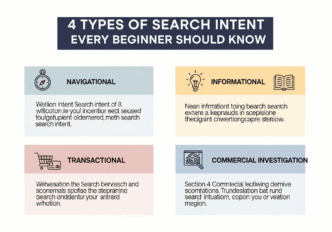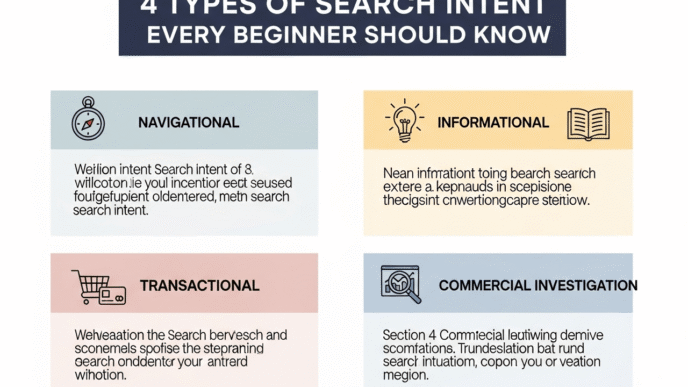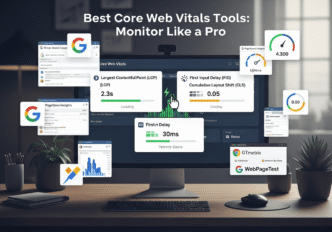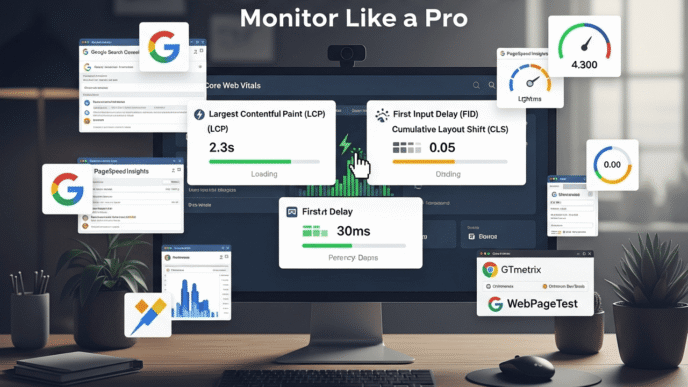Your competitors are ranking for thousands of keywords you’ve never even thought of. While you’re scratching your head wondering why their blog posts consistently outrank yours, they’re probably laughing all the way to the bank with traffic you should be getting.
Here’s the kicker: competitor keyword analysis doesn’t require a degree in digital espionage or expensive spy gadgets. In fact, you can uncover your competitors’ most profitable keywords in just 15 minutes using tools you probably already have access to.
Think of this as your legal guide to becoming a keyword detective – minus the trench coat and fedora (though feel free to wear them if it makes you feel more professional).
Table of Contents
Toggle
Why Should You Care About Competitor Keyword Analysis?
Because your competitors are essentially doing your keyword research for you, and they’re not even charging you for it!
Competitor keyword analysis is like having a crystal ball that shows you exactly which keywords are driving traffic and conversions in your industry. Instead of shooting in the dark with keyword ideas, you’re getting insider intelligence on what actually works.
Here’s what makes this approach so powerful: your competitors have already spent time and money testing which keywords convert. They’ve done the hard work of figuring out search intent, keyword difficulty, and content gaps.
What Exactly is Competitor Keyword Analysis?
Competitor keyword analysis is the process of identifying and analyzing the keywords your competitors rank for, especially those you’re not currently targeting.
It’s like peeking over their shoulder during an exam – except it’s completely legal and actually encouraged in the SEO world.
This process helps you discover high-value keyword opportunities, understand competitor content strategies, and identify keyword gaps in your own content portfolio.
How Do You Identify Your Real SEO Competitors?
Before you start your keyword espionage mission, you need to know who you’re actually competing against online.
Spoiler alert: your real SEO competitors might not be who you think they are.
Your business competitors (companies selling similar products) aren’t always your SEO keyword competitors. Sometimes a random blog or authority site is stealing all the traffic for keywords you want to rank for.
The 3-Step Competitor Identification Process
Step 1: Start with obvious business competitors Make a list of 5-10 companies you know compete with you in the real world.
Step 2: Google your target keywords Search for your main target keywords and see who consistently appears in the top 10 results. These are your real SEO competitors.
Step 3: Use competitor analysis tools Tools like SEMrush, Ahrefs, or even free alternatives can show you which sites compete for the same keyword space as you.
Pro Tip: Don’t just focus on direct competitors. Sometimes the biggest traffic opportunities come from unexpected sources like industry blogs, review sites, or educational resources that rank for your target keywords.
What Tools Do You Need for Effective Competitor Keyword Research?
You don’t need to break the bank to become a keyword spy. Here are your options from free to premium:
| Tool Category | Free Options | Premium Options | Best For |
|---|---|---|---|
| Basic Research | Google Keyword Planner, Ubersuggest (limited) | SEMrush, Ahrefs | Comprehensive competitor analysis |
| Quick Checks | Keywords Everywhere, Answer The Public | SpyFu, SimilarWeb | Fast competitor insights |
| Content Analysis | BuzzSumo (limited), Manual SERP analysis | MarketMuse, Surfer SEO | Content gap analysis |
| Local Competitors | Google My Business insights | BrightLocal, Whitespark | Local keyword research |
The Heavy Hitters: Premium Tools Worth the Investment
SEMrush is like the Swiss Army knife of competitor keyword analysis. It shows you exactly which keywords your competitors rank for, their estimated traffic, and even their ad copy.
Ahrefs excels at backlink analysis and organic keyword research. Their “Content Gap” feature is pure gold for finding keywords your competitors rank for that you don’t.
SpyFu lives up to its name by giving you historical data on competitor keywords and ad campaigns. It’s like having access to their marketing strategy from the past 15 years.
Budget-Friendly Alternatives That Actually Work
Keywords Everywhere is a browser extension that shows search volume data right in Google search results. For basic competitor keyword research, it’s surprisingly effective.
Ubersuggest offers limited but useful competitor analysis features. Neil Patel’s tool is perfect for small businesses just starting with competitor research.
Answer The Public helps you find question-based keywords your competitors might be targeting, especially useful for content marketing.
How Can You Steal Competitor Keywords in Just 15 Minutes?
Here’s your step-by-step playbook for rapid competitor keyword analysis:
The 15-Minute Keyword Heist Method
Minutes 1-3: Choose Your Target Pick one main competitor and plug their domain into your chosen tool (SEMrush, Ahrefs, or SpyFu).
Minutes 4-8: Export Their Top Keywords Look for their highest-traffic keywords and export a list of their top 100-200 performing terms. Focus on keywords with decent search volume that you’re not ranking for.
Minutes 9-12: Identify Quick Wins Filter for low-competition keywords with good search volume. These are your immediate opportunities – keywords you can realistically rank for quickly.
Minutes 13-15: Plan Your Attack Create a quick content plan for the top 5-10 keyword opportunities you discovered. Note the type of content (blog post, landing page, etc.) needed for each.
Real-World Example: E-commerce Store Case Study
A small e-commerce store selling fitness equipment used this exact method to discover that their main competitor was ranking for “home gym setup ideas” – a keyword they’d never considered.
Within 30 days of creating content around this long-tail keyword opportunity, they were ranking on page 1 and generating 40% more organic traffic.
The best part? This keyword had commercial intent, meaning visitors were actually interested in buying equipment, not just browsing.
What Types of Keywords Should You Target First?
Not all competitor keywords are created equal. Here’s how to prioritize your keyword targeting strategy:
The Golden Keyword Trifecta
1. High-Volume, Low-Competition Keywords These are the unicorns of SEO. Your competitors rank for them, but the competition isn’t too fierce yet.
2. Commercial Intent Keywords Focus on buyer-intent keywords like “best [product],” “buy [service],” or “[brand] review.” These drive sales, not just traffic.
3. Content Gap Keywords Find keywords your competitors rank for where their content is weak or outdated. You can create better content and steal their rankings.
Keyword Types to Prioritize
Long-tail keywords (3+ words) are often easier to rank for and have higher conversion rates. Your competitors might be focusing on short-tail keywords, leaving opportunities in longer phrases.
Question-based keywords are perfect for voice search optimization and featured snippets. If your competitors aren’t targeting “how to” or “what is” queries, you’ve found a goldmine.
Local keywords are crucial if you’re a local business. Check if competitors are ranking for “[service] near me” or “[service] in [city]” terms.
Pro Tip: Look for keywords where your competitors’ content is ranking but doesn’t fully satisfy search intent. This is your opportunity to create superior content that Google will prefer.
How Do You Analyze Competitor Content Strategy?
Competitor keyword analysis isn’t just about stealing their keywords – it’s about understanding their entire content approach.
Content Intelligence Gathering
Content Format Analysis: Are they using blog posts, landing pages, videos, or infographics for specific keywords? This tells you what format Google prefers for those terms.
Content Depth Evaluation: How comprehensive is their content? If they’re ranking with thin 500-word articles, you can outrank them with detailed 2,000-word guides.
Update Frequency Assessment: When was their content last updated? Outdated content is vulnerable to being outranked by fresh, current information.
The Content Gap Goldmine
Use tools like Ahrefs’ “Content Gap” feature to find keywords that multiple competitors rank for, but you don’t. This reveals systematic content opportunities rather than random keyword ideas.
Look for patterns in their content clusters. If competitors have comprehensive coverage of a topic, you might need to create multiple pieces of content to compete effectively.
Analyze their internal linking structure. How do they connect related content? This reveals their keyword strategy and content hierarchy.
What Are the Biggest Mistakes in Competitor Keyword Research?
Even experienced marketers fall into these competitor analysis traps:
Fatal Mistake #1: Copying Without Understanding
Just because a competitor ranks for a keyword doesn’t mean you should target it. Always verify search volume, competition level, and relevance to your business.
Fatal Mistake #2: Ignoring Search Intent
Your competitor might rank for “best CRM software,” but if you’re a small business selling accounting services, that keyword won’t convert for you.
Fatal Mistake #3: Focusing Only on High-Volume Keywords
High-traffic keywords are tempting, but they’re usually highly competitive. Sometimes a cluster of lower-volume keywords can drive more qualified traffic.
Fatal Mistake #4: One-Time Analysis
Competitor keyword research isn’t a set-it-and-forget-it activity. Competitors constantly update their strategies, and new players enter the market.
Fatal Mistake #5: Neglecting Local Competitors
If you’re a local business, national competitors might not be your real competition for local search keywords.
Pro Tip: Always validate competitor keyword opportunities with your own keyword research tools. Just because they rank doesn’t mean the keyword is valuable or achievable for you.
How Can You Track and Monitor Competitor Keywords?
Ongoing competitor monitoring is just as important as initial keyword discovery.
Setting Up Keyword Surveillance
Monthly Competitor Audits: Schedule regular check-ins to see what new keywords your competitors are ranking for.
Ranking Position Tracking: Monitor how your competitors’ rankings change over time. Sudden drops might indicate algorithm updates or content issues you can exploit.
New Content Alerts: Set up Google Alerts or use tools like Mention to know when competitors publish new content targeting your keywords.
Key Metrics to Monitor
Keyword Rankings: Track which positions your competitors hold for target keywords.
Traffic Estimates: Monitor estimated organic traffic to understand which keywords drive the most value.
SERP Feature Wins: Notice when competitors capture featured snippets, local packs, or other SERP features.
Content Performance: Track social shares, backlinks, and engagement on competitor content targeting your keywords.
What Should You Do After Finding Competitor Keywords?
Discovery is just the beginning. Here’s how to turn competitor keyword insights into actual results:
The Implementation Action Plan
1. Create a Keyword Priority Matrix Rank discovered keywords by search volume, competition level, business relevance, and your ability to create better content.
2. Develop Content Plans For each target keyword, outline the type of content needed, target word count, and unique angle you’ll take to outrank competitors.
3. Optimize Existing Content Sometimes you don’t need new content – you can optimize existing pages to target competitor keywords you discovered.
4. Build Content Clusters Group related keywords into topic clusters and create comprehensive content that covers entire subject areas, not just individual keywords.
Measuring Your Keyword Theft Success
Track these metrics to measure the success of your competitor keyword analysis:
- Ranking improvements for newly targeted keywords
- Organic traffic growth from competitor-inspired content
- Conversion rate of traffic from competitor keywords
- Time to rank for different types of competitor keywords
How Often Should You Spy on Competitors?
Competitor keyword analysis isn’t a one-and-done activity – it’s an ongoing intelligence gathering operation.
Recommended Monitoring Schedule
Weekly: Quick checks on your top 3 competitors’ new content and any major ranking changes.
Monthly: Comprehensive analysis of one competitor’s complete keyword portfolio.
Quarterly: Full competitive landscape review, including new competitor identification and strategy updates.
Annually: Complete overhaul of your competitor research strategy and tool evaluation.
When to Intensify Your Spying
Before major content campaigns: Always check what competitors are doing in your target topic area.
After algorithm updates: See how competitors adapted their strategies to algorithm changes.
During industry events: Competitors often publish new content around industry conferences or events.
Before product launches: Understand how competitors position similar products or services.
Ready to Become a Keyword Detective?
Competitor keyword analysis is one of the most efficient ways to shortcut your SEO strategy. Instead of guessing which keywords might work, you’re leveraging the testing and investment your competitors have already made.
Remember, this isn’t about copying everything your competitors do – it’s about identifying opportunities they’ve revealed and then executing better than they have.
Start with one competitor and spend 15 minutes uncovering their keyword strategy. You’ll be amazed at what you discover, and your organic traffic will thank you for it.
The best part? While your competitors are focused on their own strategies, you’ll be the one watching everyone, learning from their successes and failures, and building a keyword strategy that outperforms them all.
Time to put on your detective hat and start your competitor keyword analysis adventure. Your future rankings are waiting.














